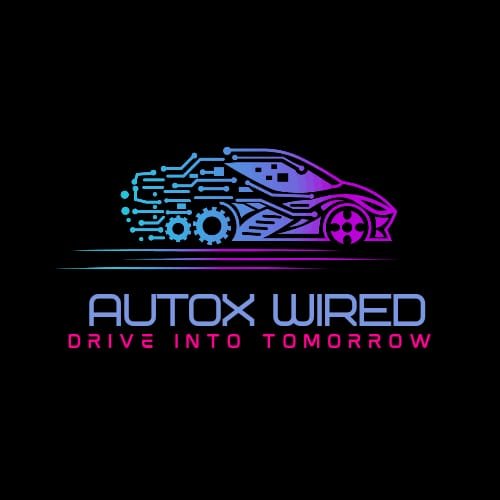
The automotive industry is undergoing a profound transformation, driven by the advent of the Internet of Things (IoT). Connected cars, equipped with advanced sensors, software, and communication technologies, are at the forefront of this revolution.
These vehicles are not only enhancing the driving experience but also redefining the relationship between humans and machines.
This comprehensive article explores the rise of IoT in the automotive industry, focusing on the technology, benefits, challenges, market trends, and future prospects of connected cars.
The Concept of Connected Cars
What are Connected Cars?
Connected cars are vehicles equipped with internet connectivity and a range of IoT-enabled features that allow them to communicate with other devices, vehicles, infrastructure, and the cloud.
These cars can send and receive data, enabling a variety of functions such as real-time navigation, remote diagnostics, vehicle-to-vehicle (V2V) communication, and infotainment.
Evolution of Connected Cars
The concept of connected cars has evolved over the past few decades, driven by advancements in technology and growing consumer demand for enhanced driving experiences. Early connected cars offered basic telematics services, such as emergency assistance and stolen vehicle tracking. Today, they incorporate a wide array of IoT technologies, transforming them into sophisticated, data-driven machines.
IoT Technologies in Connected Cars
Sensors and Data Collection
Connected cars are equipped with a multitude of sensors that collect data from various sources, including the vehicle itself, the driver, and the surrounding environment. These sensors include:
- GPS Sensors: Provide real-time location data for navigation and tracking.
- Lidar and Radar: Used for detecting obstacles, measuring distance, and enabling autonomous driving features.
- Cameras: Capture visual information for lane-keeping assistance, parking aids, and collision avoidance.
- Accelerometers and Gyroscopes: Measure vehicle dynamics and provide data for stability control systems.
- Temperature and Pressure Sensors: Monitor the condition of critical components, such as the engine and tires.
Communication Technologies
Communication is a cornerstone of connected car technology, enabling data exchange between the vehicle, other vehicles, infrastructure, and the cloud. Key communication technologies include:
- Vehicle-to-Vehicle (V2V) Communication: Allows cars to share information about their speed, position, and direction, enhancing safety and traffic flow.
- Vehicle-to-Infrastructure (V2I) Communication: Enables cars to communicate with traffic lights, road signs, and other infrastructure, optimizing navigation and reducing congestion.
- Vehicle-to-Everything (V2X) Communication: An umbrella term that encompasses V2V,
- V2I, and communication with pedestrians and cyclists.
- Cellular Networks (4G/5G): Provide high-speed internet connectivity, enabling real-time data exchange and cloud-based services.
- Wi-Fi and Bluetooth: Used for short-range communication between the vehicle and nearby devices, such as smartphones and home networks.
Cloud Computing and Data Analytics
Cloud computing and data analytics are essential for processing the vast amounts of data generated by connected cars. These technologies enable real-time analysis, decision-making, and the delivery of personalized services. Key components include:
- Cloud Platforms: Provide scalable storage and processing power for data collected from connected cars.
- Data Analytics: Tools and algorithms used to analyze data and derive insights, such as predictive maintenance and personalized recommendations.
- Machine Learning and AI: Enhance the capabilities of connected cars by enabling features like autonomous driving, natural language processing, and adaptive learning.
Benefits of Connected Cars
Enhanced Safety
Safety is a primary benefit of connected cars, with numerous features designed to prevent accidents and protect occupants.
- Collision Avoidance Systems: Use sensors and communication technologies to detect potential collisions and take corrective actions, such as braking or steering.
- Real-Time Traffic Alerts: Provide drivers with up-to-date information about road conditions, accidents, and traffic jams, helping them avoid dangerous situations.
- Remote Diagnostics: Allow for continuous monitoring of the vehicle’s condition, enabling early detection of issues and preventing breakdowns.
Improved Efficiency and Convenience
Connected cars offer a range of features that enhance driving efficiency and convenience.
- Smart Navigation: Provides real-time route optimization based on traffic conditions, road closures, and weather, reducing travel time and fuel consumption.
- Remote Control: Enables drivers to remotely start their car, adjust climate settings, and check the vehicle’s status using a smartphone app.
- Over-the-Air Updates: Allow automakers to deliver software updates and new features to vehicles remotely, improving functionality and security.
Personalized User Experience
Connected cars can deliver a highly personalized driving experience by leveraging data and connectivity.
- Infotainment Systems: Provide access to a wide range of entertainment options, such as streaming music, videos, and internet browsing, integrated with personal preferences.
- Adaptive Learning: Use machine learning to understand the driver’s habits and preferences, offering personalized recommendations and settings.
- Connected Services: Include concierge services, emergency assistance, and integration with smart home devices, enhancing convenience and comfort.
Environmental Impact
Connected cars can contribute to reducing the environmental impact of transportation through improved efficiency and smart driving features.
- Eco-Driving Assistance: Provides real-time feedback and suggestions for driving more efficiently, reducing fuel consumption and emissions.
- Vehicle-to-Grid (V2G) Integration: Enables electric vehicles to communicate with the power grid, optimizing charging times and supporting renewable energy sources.
Market Trends and Adoption
Growth of Connected Car Market
The connected car market has experienced significant growth in recent years, driven by technological advancements, consumer demand, and regulatory support. Key trends include:
- Increased Adoption of IoT: The proliferation of IoT devices and technologies has accelerated the development and adoption of connected cars.
- Rise of Autonomous Vehicles: The integration of connected car technologies with autonomous driving systems is driving the market forward.
- Focus on Electric Vehicles (EVs): The growing popularity of EVs, which are often equipped with advanced connectivity features, is contributing to market growth.
Key Players and Collaborations
Several key players are leading the development and deployment of connected car technologies, including automakers, technology companies, and service providers.
- Automakers: Companies like Tesla, BMW, and Ford are at the forefront of integrating IoT technologies into their vehicles, offering advanced connectivity and autonomous driving features.
- Technology Companies: Tech giants like Google, Apple, and Microsoft are developing software and platforms for connected cars, collaborating with automakers to enhance functionality.
- Telecommunication Providers: Companies like AT&T, Verizon, and Huawei are providing the necessary infrastructure and connectivity solutions for connected cars.
Challenges and Considerations
Data Privacy and Security
The increased connectivity and data exchange in connected cars raise significant privacy and security concerns.
- Data Privacy: Protecting the personal data of drivers and passengers is crucial. Automakers must ensure that data collection and usage comply with privacy regulations and that users have control over their data.
- Cybersecurity: Connected cars are vulnerable to cyberattacks, which can compromise safety and functionality. Implementing robust cybersecurity measures, such as encryption and intrusion detection systems, is essential.
Technological and Infrastructure Challenges
Several technological and infrastructure challenges must be addressed to realize the full potential of connected cars.
- Network Connectivity: Reliable and high-speed internet connectivity is essential for connected cars. The deployment of 5G networks will play a critical role in enhancing connectivity and enabling advanced features.
- Interoperability: Ensuring interoperability between different devices, vehicles, and infrastructure is crucial for the seamless operation of connected car systems.
- Cost and Complexity: Developing and integrating connected car technologies can be costly and complex. Automakers must balance the costs with the benefits to ensure affordability and market acceptance.
Regulatory and Legal Issues
The development and deployment of connected cars are subject to various regulatory and legal considerations.
- Regulation Compliance: Automakers must comply with a range of regulations related to safety, data privacy, and emissions. Ensuring compliance across different regions can be challenging.
- Liability and Insurance: Determining liability in the event of an accident involving connected or autonomous vehicles presents significant legal challenges. Clear regulations and frameworks are needed to address these issues.
Future Prospects
Advancements in Autonomous Driving
The future of connected cars is closely tied to advancements in autonomous driving technology. IoT will play a crucial role in enabling higher levels of autonomy.
- Level 3 and Beyond: The development of Level 3 and higher autonomous vehicles, which can handle most driving tasks without human intervention, will rely heavily on connected car technologies.
- Sensor Fusion: Combining data from multiple sensors, such as Lidar, radar, and cameras, with IoT connectivity will enhance the accuracy and reliability of autonomous driving systems.
Integration with Smart Cities
Connected cars will be integral to the development of smart cities, where data and connectivity improve urban living.
- Smart Traffic Management: Connected cars can communicate with traffic lights, road signs, and other infrastructure to optimize traffic flow and reduce congestion.
- Mobility as a Service (MaaS): The integration of connected cars with MaaS platforms will enable seamless, multimodal transportation options, enhancing convenience and reducing the need for personal vehicle ownership.
Sustainable Mobility Solutions
Connected cars will contribute to sustainable mobility by enabling more efficient and eco-friendly transportation solutions.
- Electric and Autonomous Fleets: The rise of electric and autonomous vehicle fleets will reduce emissions and enhance the efficiency of urban transportation.
- Renewable Energy Integration: Vehicle-to-grid (V2G) technology will enable connected electric vehicles to support renewable energy sources and optimize energy usage.
The rise of IoT in the automotive industry is transforming the way we drive and interact with vehicles. Connected cars offer numerous benefits, including enhanced safety, improved efficiency, personalized user experiences, and reduced environmental impact. However, challenges related to data privacy, security, technological infrastructure, and regulatory compliance must be addressed to fully realize the potential of connected cars.
As technology continues to advance, the future of connected cars looks promising. Advancements in autonomous driving, integration with smart cities, and sustainable mobility solutions will drive the evolution of connected cars, creating a safer, more efficient, and eco-friendly transportation system.
In conclusion, connected cars represent a significant step forward in the automotive industry, leveraging IoT technologies to enhance the driving experience and contribute to a smarter, more connected world. As the industry continues to innovate and overcome challenges, connected cars will play a pivotal role in shaping the future of transportation.
ALSO READ: Top 5 Affordable Electric Vehicles with a Touch of Class





